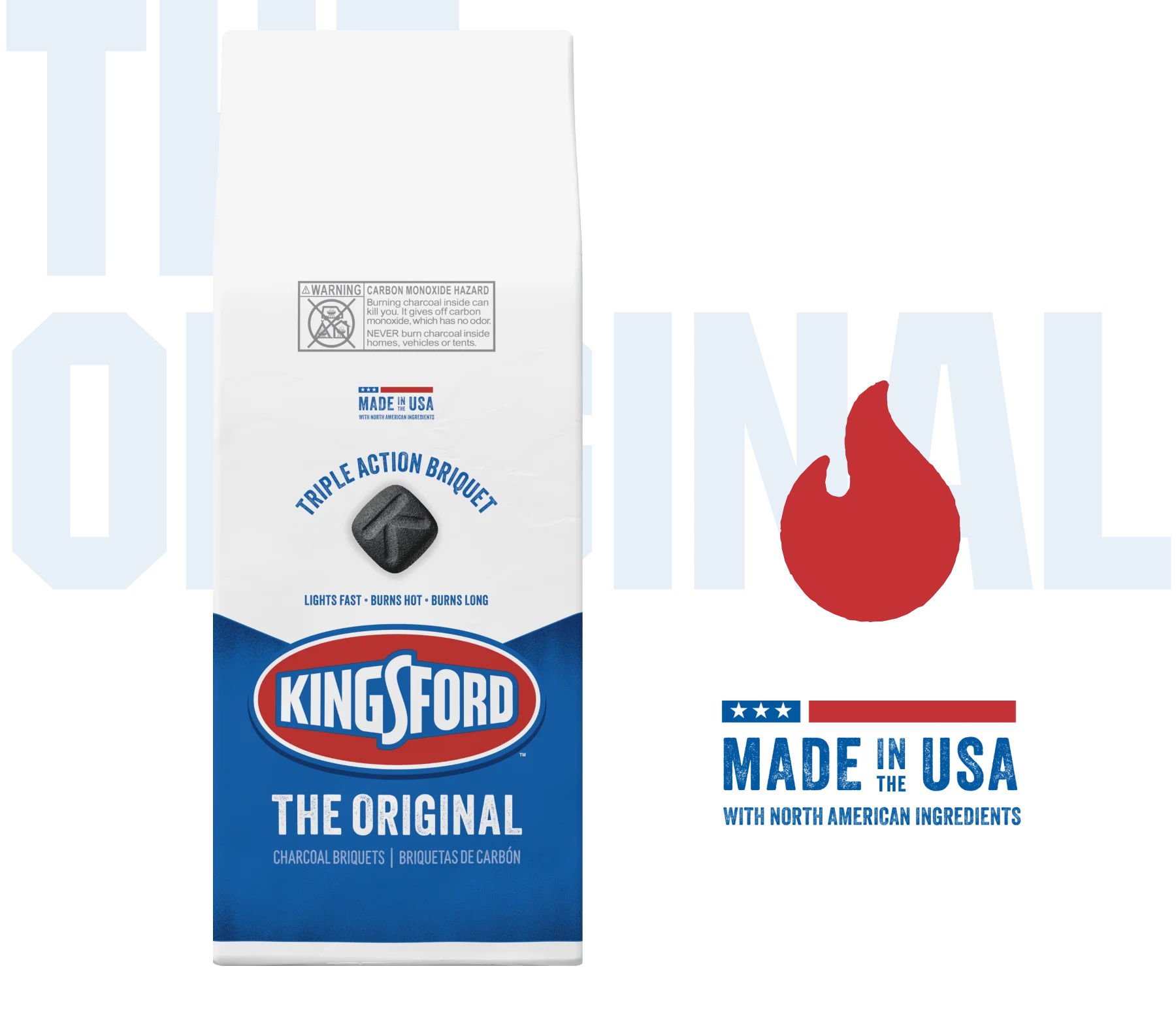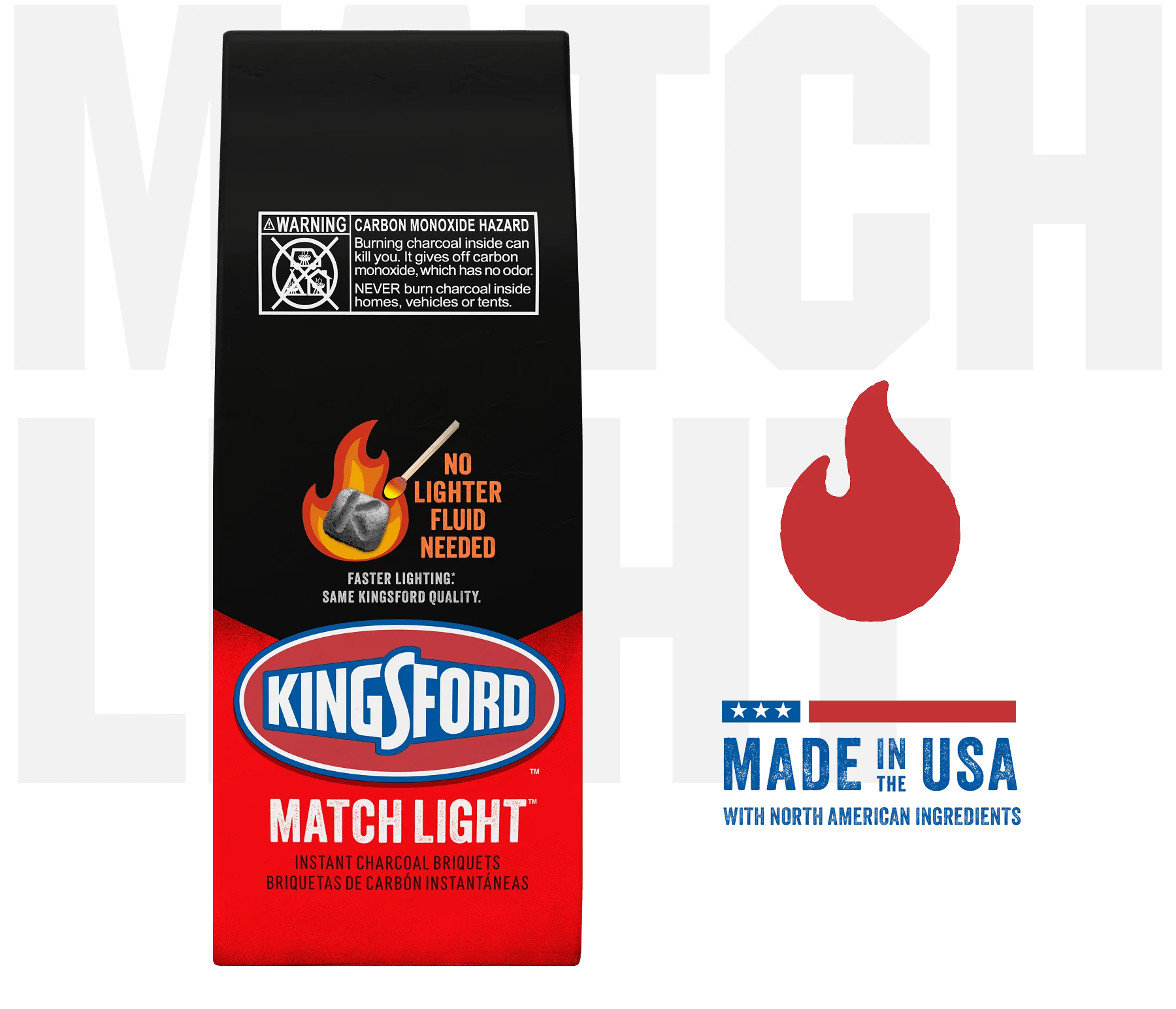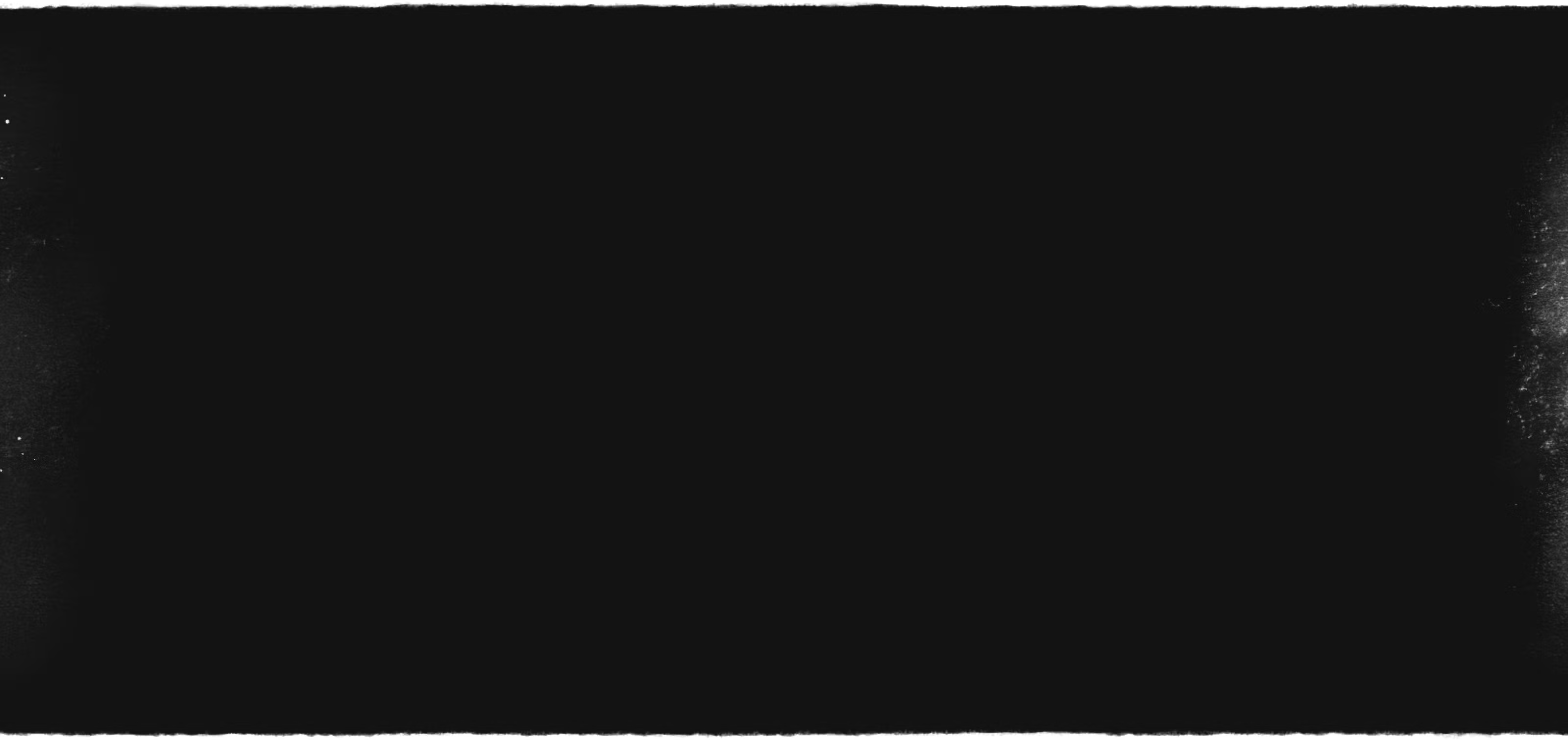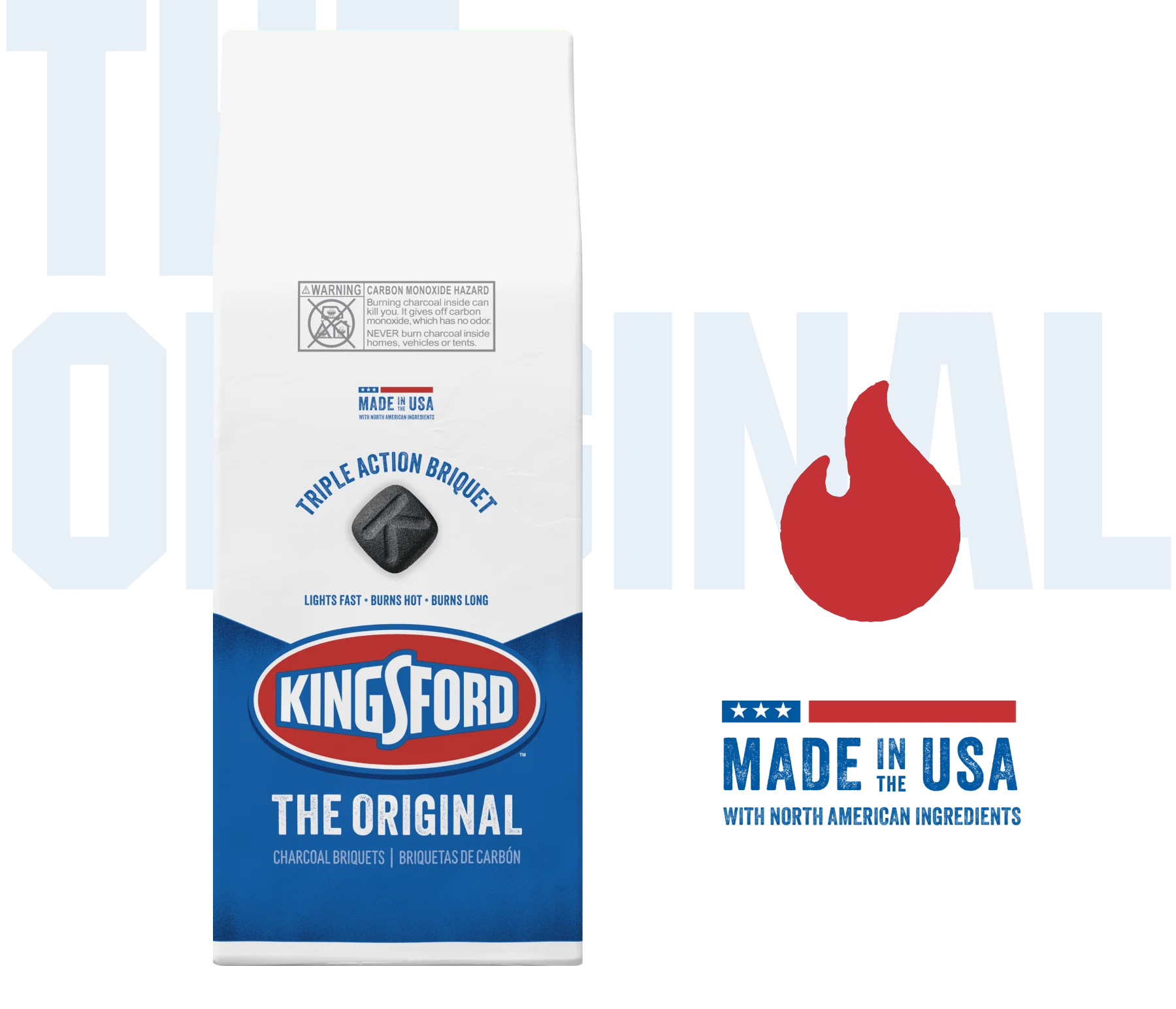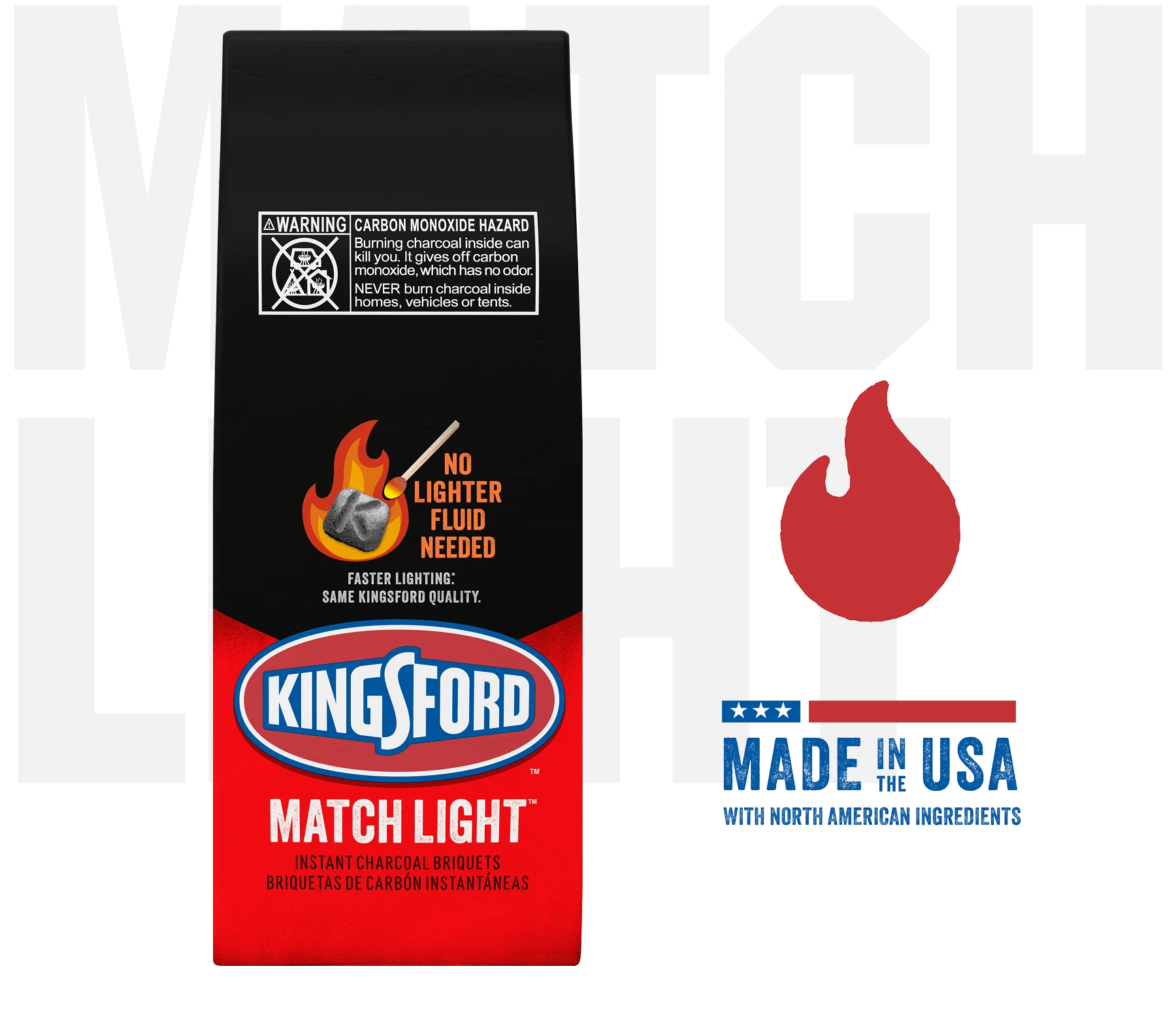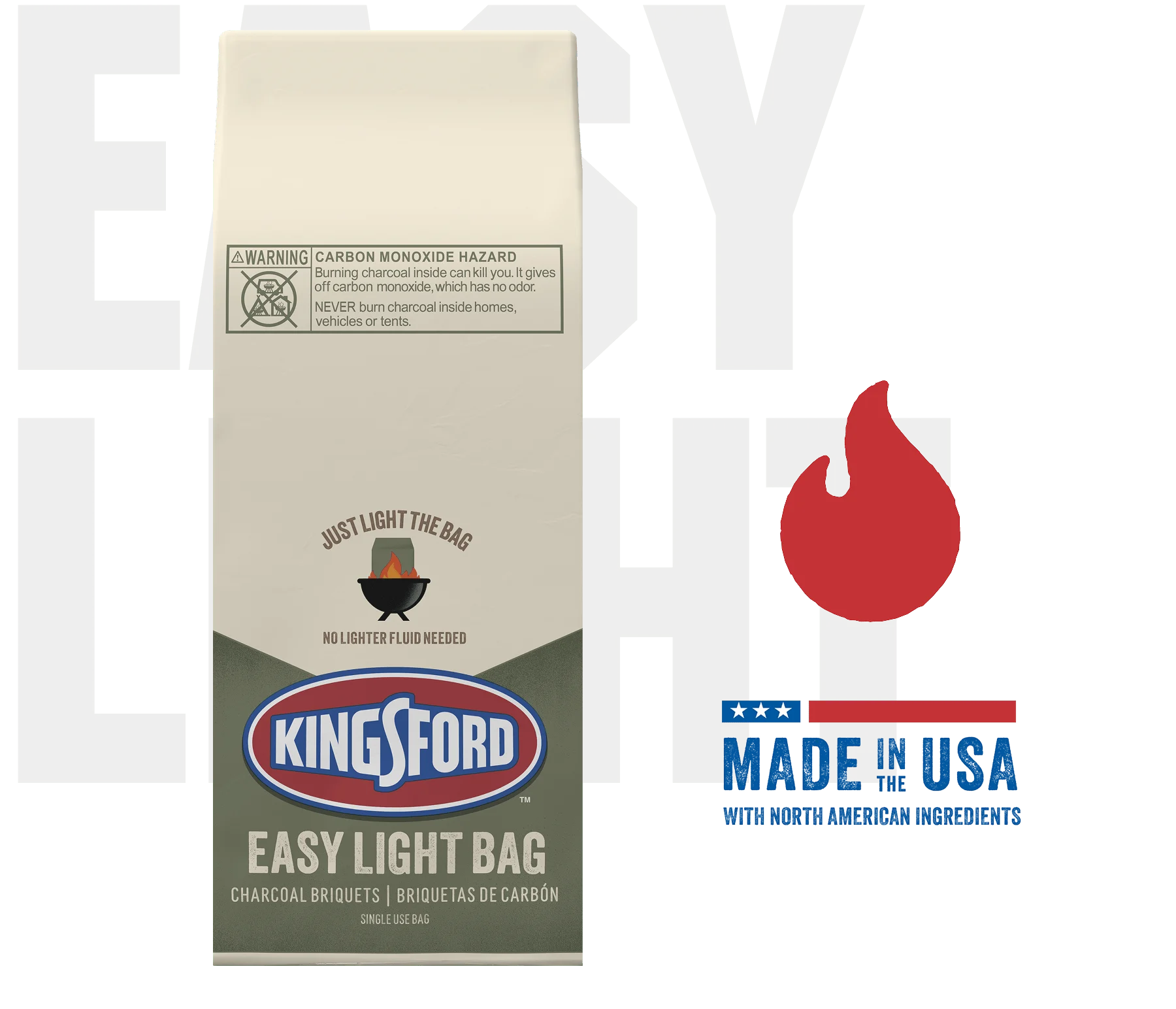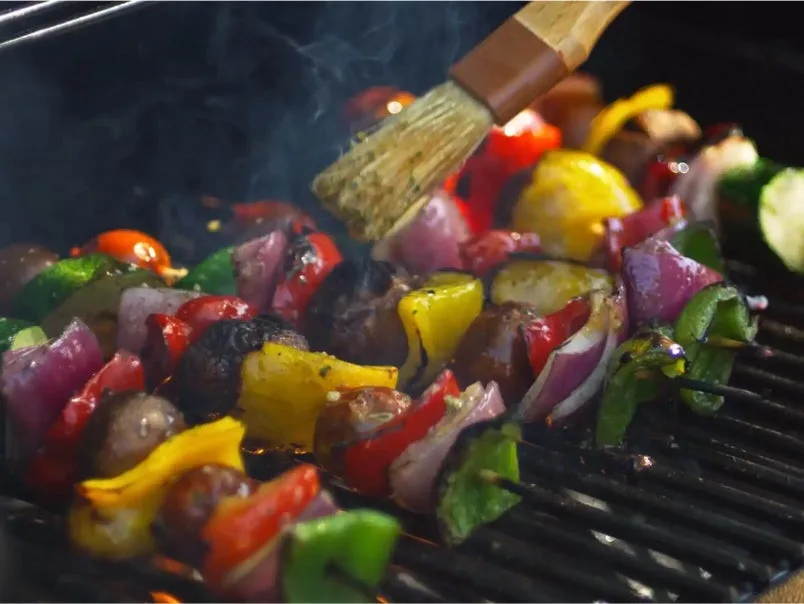
What You'll Need
Before starting, make sure you have everything on this list. We recommend Kingsford™ Original Charcoal Briquets. And don’t skip the digital meat thermometer — it’s the best way to get your brisket done right.
Drip pan
Digital Meat Thermometer
Digital BBQ Thermometer
Long-Handled Tongs or Long-Handled Metal Spatula
Paper Towels
Aluminum Foil
Knife
Small Fork
One 10 to 12 lb. Brisket
Dry Rub
Water
Apple Juice
Salt and Pepper
Cooking Oil




















